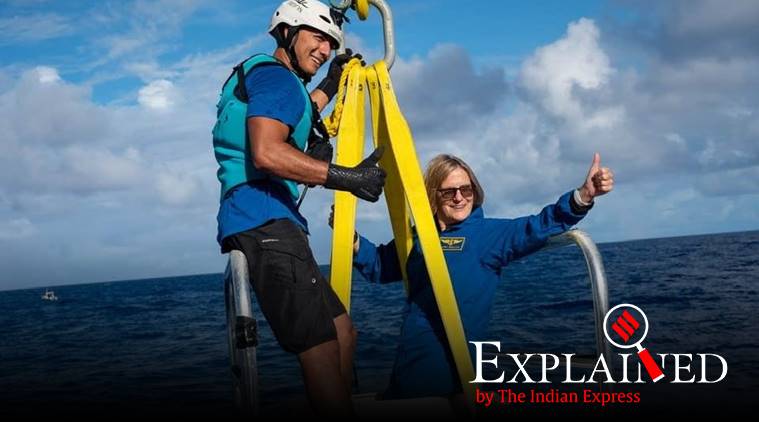36 years after her spacewalk, Kathy Sullivan has descended to the deepest known spot in the ocean. What is the Challenger Deep?
On June 7, astronaut and oceanographer Kathy Sullivan, who was the first American woman to walk in space in 1984, became the first woman and the fifth person in history to descend to the deepest known spot in the world’s oceans, called the Challenger Deep in the Mariana Trench, which is seven miles below the surface of the Pacific Ocean.
Sullivan is now the only human who has walked in space and reached the deepest point in the ocean. She made her descent in the two-person submersible (vehicles that can be operated underwater) ‘Limiting Factor’ as part of Caladan Oceanic’s Ring of Fire Expedition.
Through the expedition, the team hopes to observe volcanic vents, identify new species and conduct the extensive mapping of the US Exclusive Economic Zone at the request of the National Oceanic and Atmospheric Administration (NOAA).
What is Challenger Deep?
According to NOAA, the average depth of the ocean is about 12,100 feet and the deepest part is called the Challenger Deep, which is located below the surface of the western Pacific Ocean. It is approximately 36,200 feet deep.
The first dive at Challenger Deep was made in 1960 by Lieutenant Don Walsh and Swiss scientist Jacques Piccard on a submersible called ‘Trieste’. The British Ship HMS Challenger discovered Challenger Deep between 1872-1876.
In 2012, film director James Cameron reached the bottom of the Mariana trench after a descent that lasted 2 hours and 36 minutes. Cameron reached a depth of about 10,908 metres on a dive in his submersible called the ‘Deepsea Challenger’ and became the first to complete a solo submarine dive to this spot.
Why are scientists interested in deep ocean areas?
As per NOAA, most of the existing knowledge of the oceans comes from shallower waters, while deeper waters remain relatively unexplored, even as humans are relying more on these areas for food, energy and other resources. “Ocean exploration, however, is not randomly wandering in hopes of finding something new. It is disciplined and organized and includes rigorous observations and documentation of biological, chemical, physical, geological, and archaeological aspects of the ocean,” the NOAA website says.
Further, finding out more about the deep ocean areas can potentially reveal new sources for medical drugs, food, energy resources and other products. Significantly, information from the deep oceans can also help to predict earthquakes and tsunamis, and help us understand how we are affecting and getting affected by the Earth’s environment.
What does it take to reach the deep ocean?
Vehicles called Human Occupied Vehicles (HOVs) may be used that carry scientists to the deep sea. Alternatively, there are unmanned Remotely Operated Vehicles (ROVs) that are linked to ships using cables and can be steered by scientists remotely, according to an article on Smithsonian.
Even so, it is difficult for most private citizens to travel more than 100 feet below the surface of the ocean. According to a blog published by the Scientific American, “most recreational divers can’t explore more than about 120 feet down due to the amount of air you need to keep your lungs pressurized at depth and to nitrogen narcosis, an intoxication by nitrogen that starts to set in around that depth (most of our atmosphere is nitrogen, not oxygen).”
Further, technical divers can go as deep as 500 feet or more, but with an array of tanks filled with different gas blends, as per the blog.
? The Indian Express is now on Telegram. Click here to join our channel (@indianexpress) and stay updated with the latest headlines
For all the latest Explained News, download Indian Express App.
Source: Read Full Article






